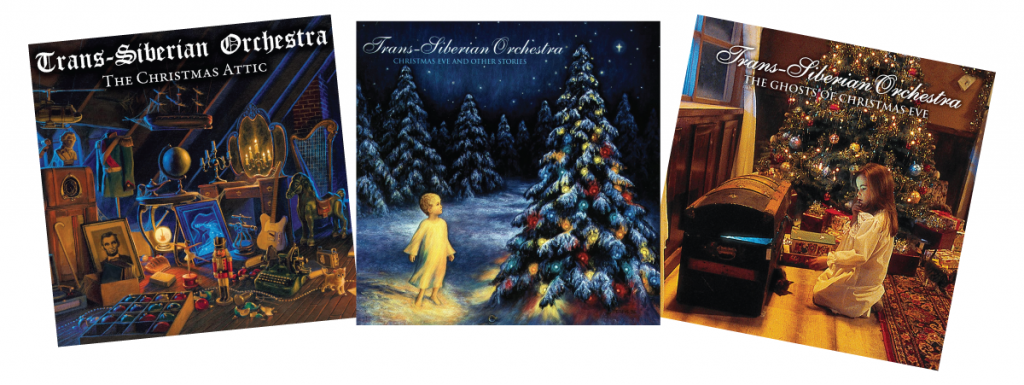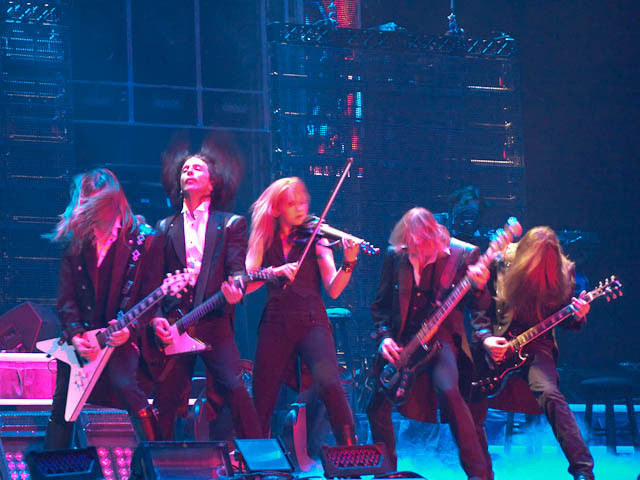
Trans-Siberian Orchestra

Paul O’Neill had an unambiguous yet remarkably bold goal when he created Trans-Siberian Orchestra, or TSO as they are sometimes referred to. He describes the whole idea as establishing a progressive rock band. This band would extend genre boundaries beyond any previous group’s achievements significantly.
TSO has sold over 10 million albums. This helped generations of fans rediscover the multi-dimensional art form of the rock opera. TSO has reached top international status by performing on the road. Billboard magazine recognized them as one of the decade’s leading touring acts. They produced a $20 million-plus show seen by over 100 million spectators in more than 80 cities. This generated $280 million in ticket sales. Moreover, it donated $11 million to charity.

TSO’s Origin & History
Growing up in New York City O’Neill was surrounded by diverse rock music influences. He absorbed influences from Broadway musicals and Motown. Additionally, singer-songwriters Jim Croce and Harry Chapin shaped his tastes. Meanwhile, writers Oscar Wilde and Robert Graves shaped his literary preferences. He started his career by playing guitar for the touring productions of Jesus Christ Superstar and Hair. Later, he joined Leber-Krebs Inc., a Manhattan-based management firm in the late ’70s. This firm was known for representing Aerosmith, Ted Nugent, AC/DC, Def Leppard, the Scorpions, the New York Dolls, and many other acts. O’Neill gained prominence as a concert promoter in Japan during the ’80s. He later moved back to the United States to pursue writing and producing as his full-time career.
Helming Aerosmith’s Classics Live I and Classics Live II albums was followed by a beginning a fortuitous relationship with the band Savatage. This led to conceptual pieces such as Hall Of The Mountain King, Gutter Ballet, Streets: A Rock Opera and Dead Winter Dead. Through his work in producing O’Neill met Jon Oliva, Bob Kinkel, and Al Pitrelli. He also met legendary studio engineer Dave Wittman who became essential original collaborators in his Trans-Siberian Orchestra project.
Creating the Sound of TSO
O’Neill explains his desire to mix his favorite music forms into a new musical style. “Basically I was building on the work of everybody I worshipped: O’Neill drew inspiration from The Who’s rock operas and blended it with Emerson, Lake & Palmer and Queen’s fusion of classical and rock music while incorporating Pink Floyd’s extravagant light shows. I desired to create a comprehensive rock opera with a complete progressive band supported by at least 18 lead vocalists.

O’Neill presented his concept to Atlantic Records which accepted and funded the development of Romanov which was supposed to be TSO’s debut release. “We were very fortunate,” he says. Among the few remaining labels that maintained ‘old school’ artist development practices remained. The foundational idea was that we would create six rock operas as well as a Christmas trilogy together with one or two regular albums.
TSO released their debut album, Christmas Eve and Other Stories, as the first part of the Christmas trilogy after Romanov temporarily stepped aside. The socially conscious single “Christmas Eve/Sarajevo 12/24” drove the album to receive double platinum certification. The Christmas Attic received platinum certification in 1998 followed by The Lost Christmas Eve which concluded the trilogy in 2004. While finishing their trilogy work TSO introduced their first non-holiday rock opera Beethoven’s Last Night which achieved gold certification.

The Live Experience
TSO solidified its fan base through live performances. In 1999 the group started their annual November-December extravaganza which O’Neill proudly describes as “as over the top as we can make it.” Our performances include two stages equipped with pyrotechnics and lasers on either side of the arena with additional stage setups in the crowd and superior sound quality. At a Trans-Siberian Orchestra concert fans will find only first-class viewing options. My goal for the audience is for them to depart from our shows so amazed they cannot comprehend what they witnessed.
O’Neill laughs while admitting that planning consumes their time while others often urge him to “Paul stop writing and start recording!” It’s working out great, though. I feel fortunate that we’ve managed to keep this going for so long while getting to live our passion as a career. The arts possess tremendous power which requires equal accountability. To effect global change choose writing over politics because books and great songs have more influence. Trans-Siberian Orchestra embodies my belief in that principle.
According to O’Neill music possesses the power to both transport listeners and bring about transformation. TSO began with the objective to deliver music that reaches maximum emotional depth. Our goal is to create melodies which inspire without lyrics and poetic lyrics that stand alone without melody yet together they form an alloy that produces a result greater than their individual parts. Through integration these songs form a narrative fabric which adds additional depth to every individual song.
O’Neill states that the essence of Trans-Siberian Orchestra was fully captured. The ensemble consists of highly innovative and skilled members who work together to push the limits of audience experience through sound, sight and emotion. As long as we maintain our core ideal we can achieve limitless possibilities.



